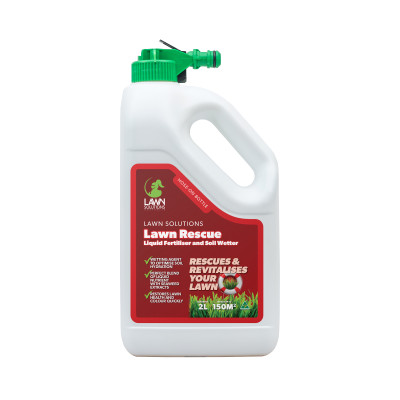Is your lawn going the colour of custard? Could be your soil’s a little ‘sweet.’ That is, your soil’s pH may be too high. Your lawn won’t perform its best with a soil pH too high (7 to 14, alkaline) or too low (0 to 6, acidic). You could waste fertiliser too, as the lawn won’t feed on it as well if the pH isn’t right. A pH between 6 and 7 and your lawn’s in heaven. And the perfect time to get it in that sweet spot is when you’re laying new lawn. However, new or established, grab a soil test kit or pH meter and test your soil.
A soil test kit even tells you what you need to do to adjust the pH. But if you’re using a meter, then here’s a guide as to what to do next:
For sandy loam soil, you can raise the pH by one unit by spreading the equivalent of 150g of liming material (calcium carbonate) per square metre. (A handful is about 100g.)
Heavy clay soils will need at least 250g to raise the pH by one unit. A super fine grade of lime works the fastest.
For an established lawn, which may lack magnesium, mix 50/50 lime and dolomite as the liming material to get the right balance of calcium and magnesium. Dolomite is only available in one grade.
To lower your soil’s pH use a sulphur product, such as sulphate of ammonia. You can reduce the pH by one unit by applying 100g of sulphate of ammonia per square metre.
Water them in well after application.
Soil conditioners can help you to get the most out of your lawn, too:
Wetting agents assist in getting water to your lawn, rather than the water running off.
Water storage crystals absorb water and make it available to your lawn’s roots.
Fertiliser, such as Lawn Solutions Premium Lawn Fertiliser, gives your lawn essential nutrients and trace elements.
Gypsum (calcium sulphate) helps to break down clay soils to improve drainage and soil structure.
Take your soil from compacted, acidic or too sweet, to sweet as – your lawn will love it.


